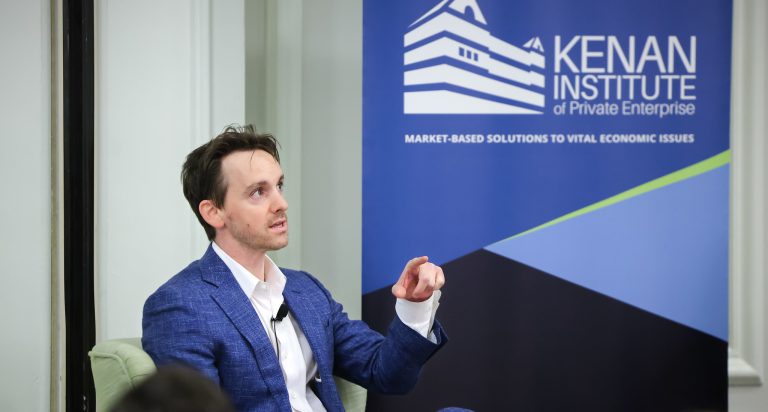In his Frontiers of Business keynote examining the use of artificial intelligence, MIT economist David Autor sees a future where AI extends the expertise of workers rather than replacing them.

Embracing Agency in the AI Revolution
Artificial intelligence was a major topic of conversation at the Frontiers of Business Conference on October 10. See how speakers and panelists think the technology will change the future of business.

Our American Growth Project examination of skills in the workforce begins with a discussion of why skills are difficult to measure, then moves to a broad look at two ways to estimate the skill level across our Extended Metropolitan Areas.
Generative AI such as ChatGPT holds the potential to alter many kinds of work, but analysis of a new report shows the occupations most likely to be affected are populated by more women than men.
How will sweeping changes in primary care services and providers affect the primary care workforce? We examine this question as well as how well the increasing demand for these services can be met in the future.

UNC Kenan-Flagler Business School Professor Mark McNeilly discusses how ChatGPT and other AI tools will change the workplace - as well as how workers can best prepare themselves for these changes.
COVID-19 sent shockwaves through the global economic system, disrupting financial markets, slowing productivity and exacerbating inequities. But its unprecedented impact on the labor market may serve as the pandemic’s most enduring economic effect.

How Labor Mobility Affects the Economy and Workers
Research from UNC Kenan-Flagler Business School Assistant Professor of Finance Abhinav Gupta demonstrates how a seemingly small change in the green-card application process holds tremendous significance for millions in the tech industry, made even more relevant by the sector’s current slowdown.
If companies are going to provide equitable advancement opportunities for remote and hybrid workers, managers must be mindful and leaders must lead, say Jami Stewart of Cisco Systems Inc. and Jes Averhart of Jes & Co., speakers at a recent discussion hosted by the Kenan Institute-affiliated UNC Entrepreneurship Center and the Research Triangle Foundation. Also: A company’s commitment to social impact can be a key to adding and keeping talented young employees.
Much has been made about the labor force participation rate, or the percentage of Americans over 16 who are working or actively looking for work — and for good cause, given the number of unfilled vacancies at U.S. firms. If fewer Americans are working, it is going to be harder for firms to staff all of their openings. Currently, 62.2% of adult Americans are working or looking for work. This compares with a historical average of 63.9% in 2019. With 259 million adult Americans, this 1.7 percentage point decrease in the labor force participation rate translates to a missing 4.4 million workers. And the narrative to date has primarily focused on how many Americans made changes following the COVID-19 pandemic (in response to lockdowns, layoffs, health concerns or care responsibilities) and the sizable fraction of these Americans who are still sitting on the sidelines. Given the steady drumbeat of news about how firms are unable to fill all their positions, there is much interest in how and when we expect these workers to return to the labor force. So, when can we expect them to join the labor pool?
Hybrid work scheduling is here to stay, and it points to a broader incentive that companies can offer as part of employee recruiting and retention, a panel of experts said Tuesday, April 26 as part of “Designing Work for Attracting & Retaining Talent,” a discussion and networking session hosted by the Kenan Institute-affiliated UNC Entrepreneurship Center and the Research Triangle Foundation.







A New Model to Leverage the Impact of ChatGPT and AI
As generative AI tools embed themselves into everyday society, all of us are trying to understand their short- and long-term impact on organizations. The Technology Applications and Implications Model can help.